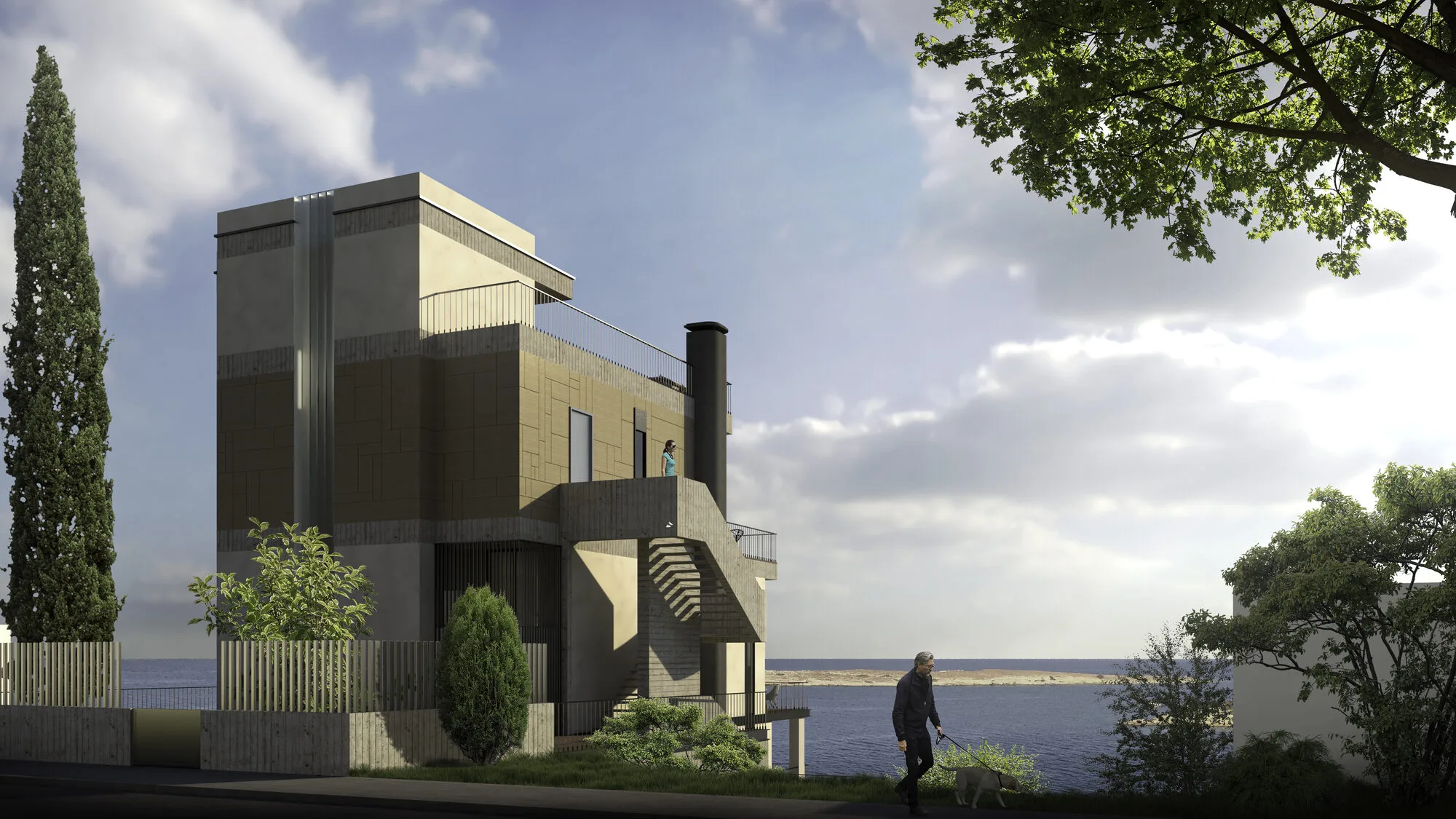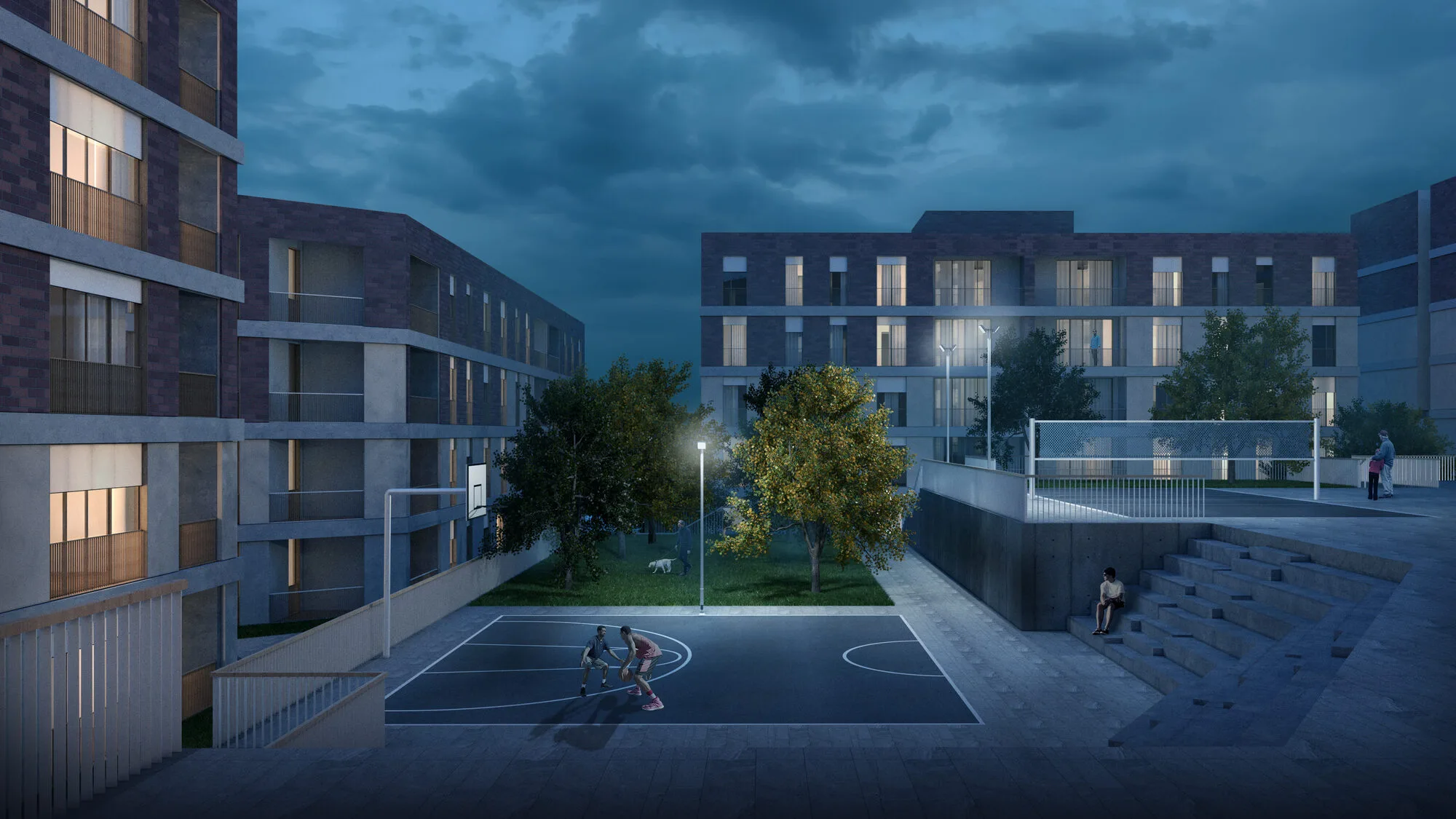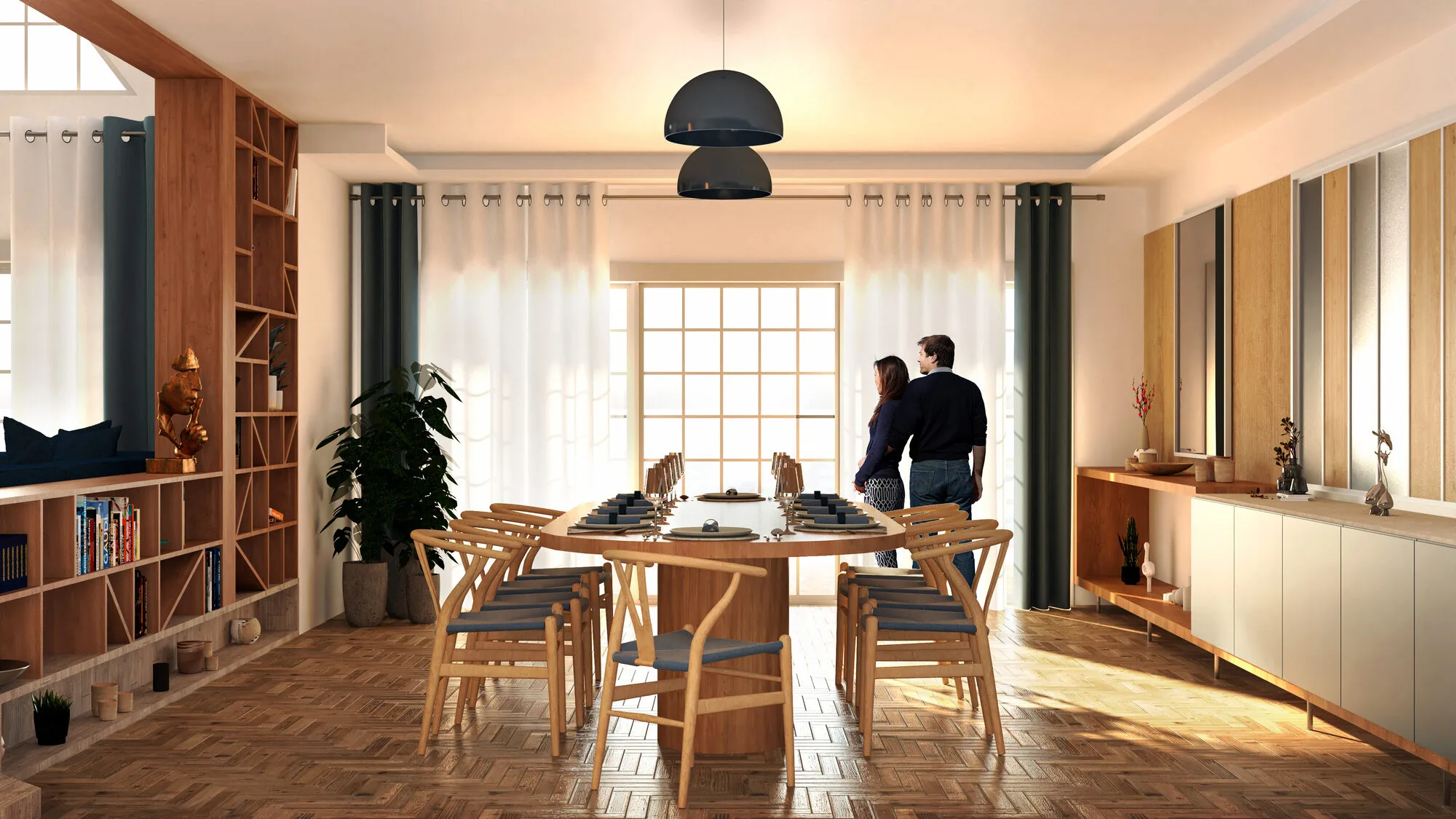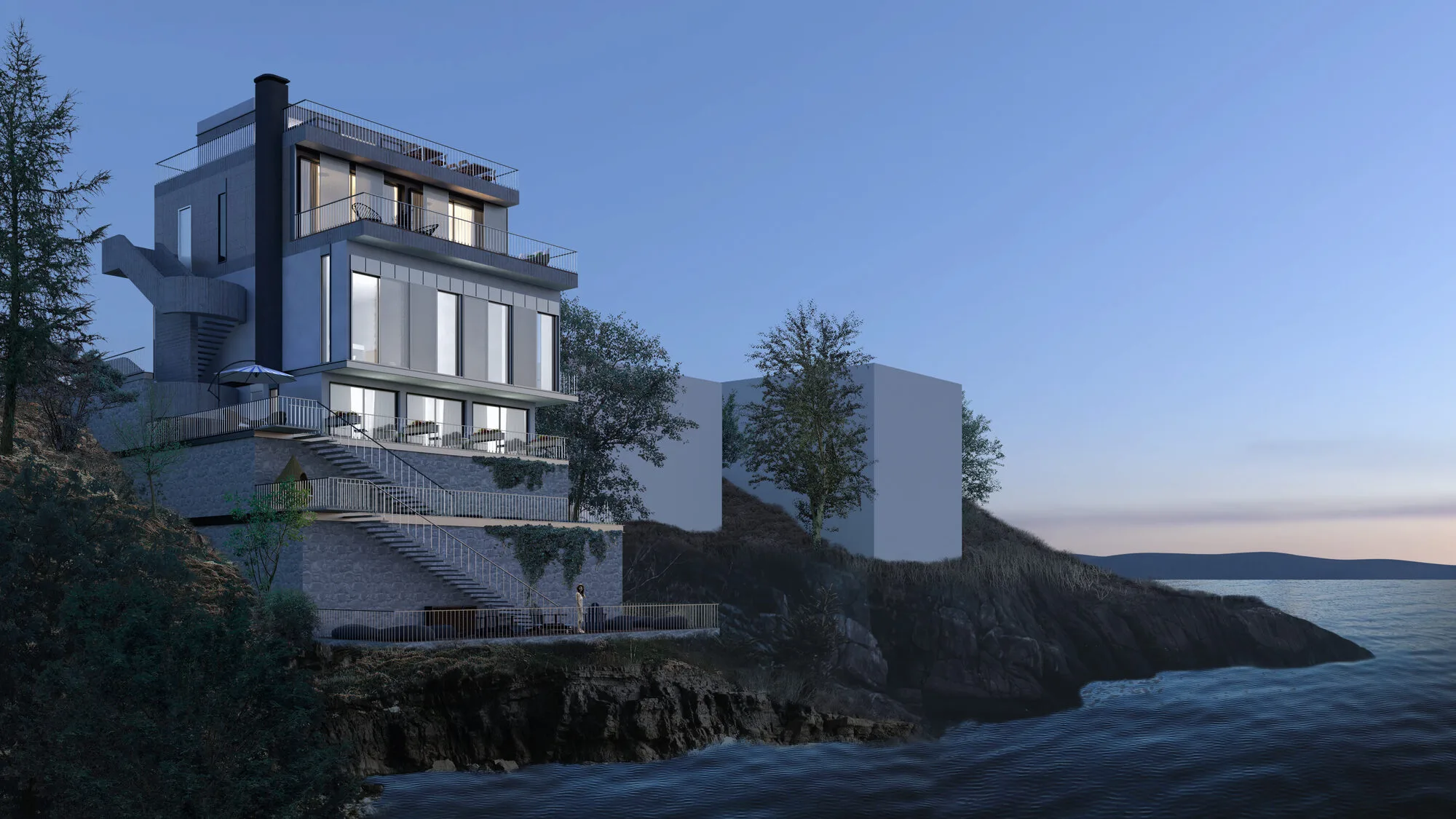
Karaburun Villa Design
Karaburun Villa
Situated at the tip of a promontory in Karaburun, Izmir, the design area of Karaburun House is nestled along Fener Street, a picturesque location characterized by its limestone geological features. Despite its relatively short width, this promontory experiences a significant incline from the sea, leading to a gradual tiering of various residential complexes along its slope. This unique topography informs the architectural narrative of the project, facilitating a dialogue between the built environment and the natural landscape.
Karaburun Villa Design
Designed for a large family residing in Izmir who predominantly spend their summers in Karaburun, the structure is envisioned to accommodate approximately 12 additional rooms for hostel-like purposes. This dual functionality allows the building to serve as a family retreat while simultaneously catering to seasonal visitors. The primary approach to the site reveals a family-centric design at the upper levels, while transparent surfaces at the ground level seamlessly integrate the building into its surroundings, inviting potential holidaymakers into a welcoming environment.
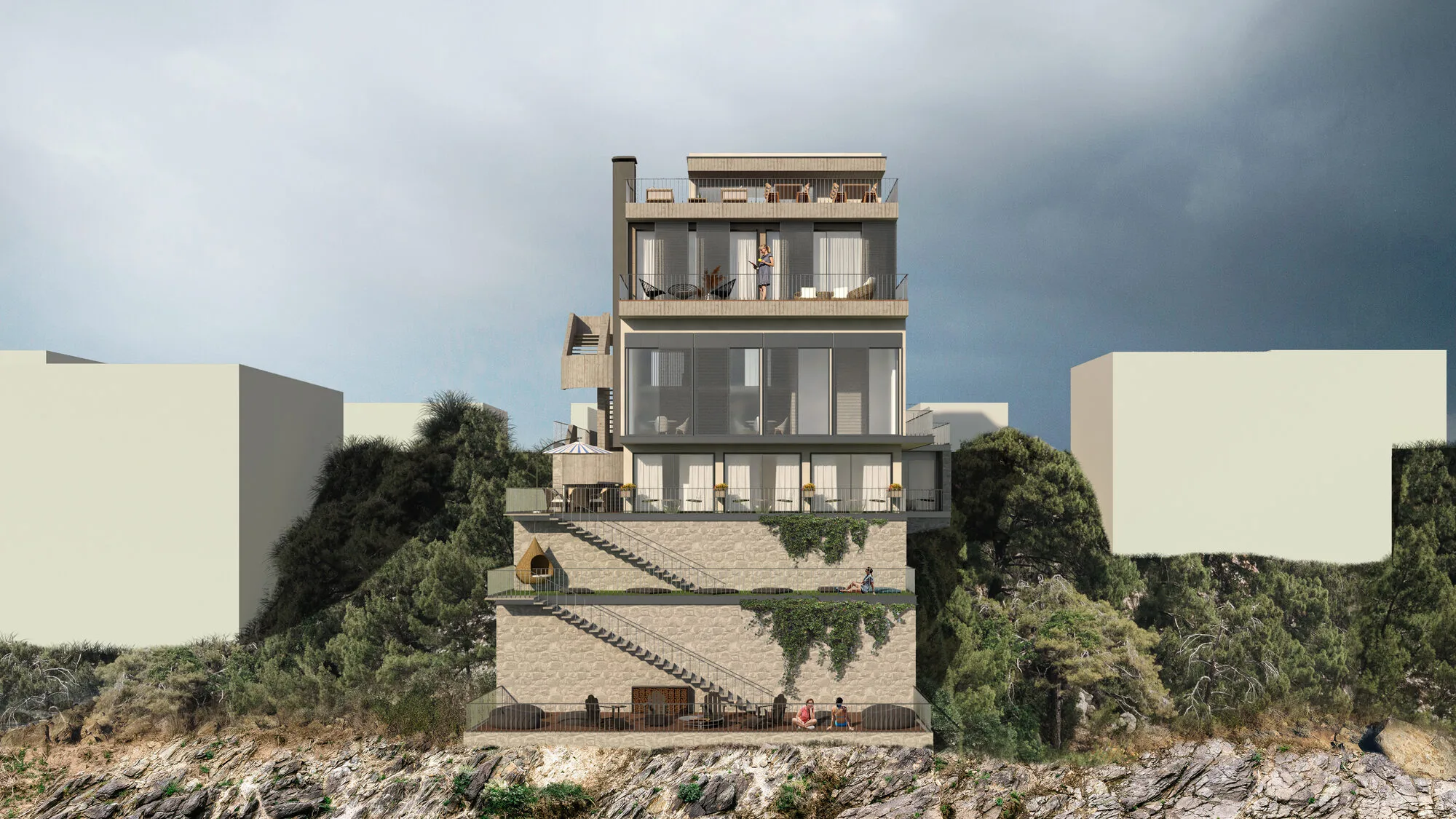
The ground floor is articulated to serve all users effectively, featuring communal spaces such as a living room, dining room, library and relaxation area, and kitchen. This arrangement fosters interaction among residents and guests, enhancing the sense of community within the space.
Given local regulations that restrict construction to only two stories, the design optimizes spatial gains through tiered elevations that harmonize with the natural incline of the site. Each tier not only creates usable terraces for the occupants but also contributes to a dynamic relationship between the structure and its setting. The building, thus, embodies the concept of a "Terrace House," allowing the form to emerge organically from its landscape, with each level responding to both functional and aesthetic requirements.
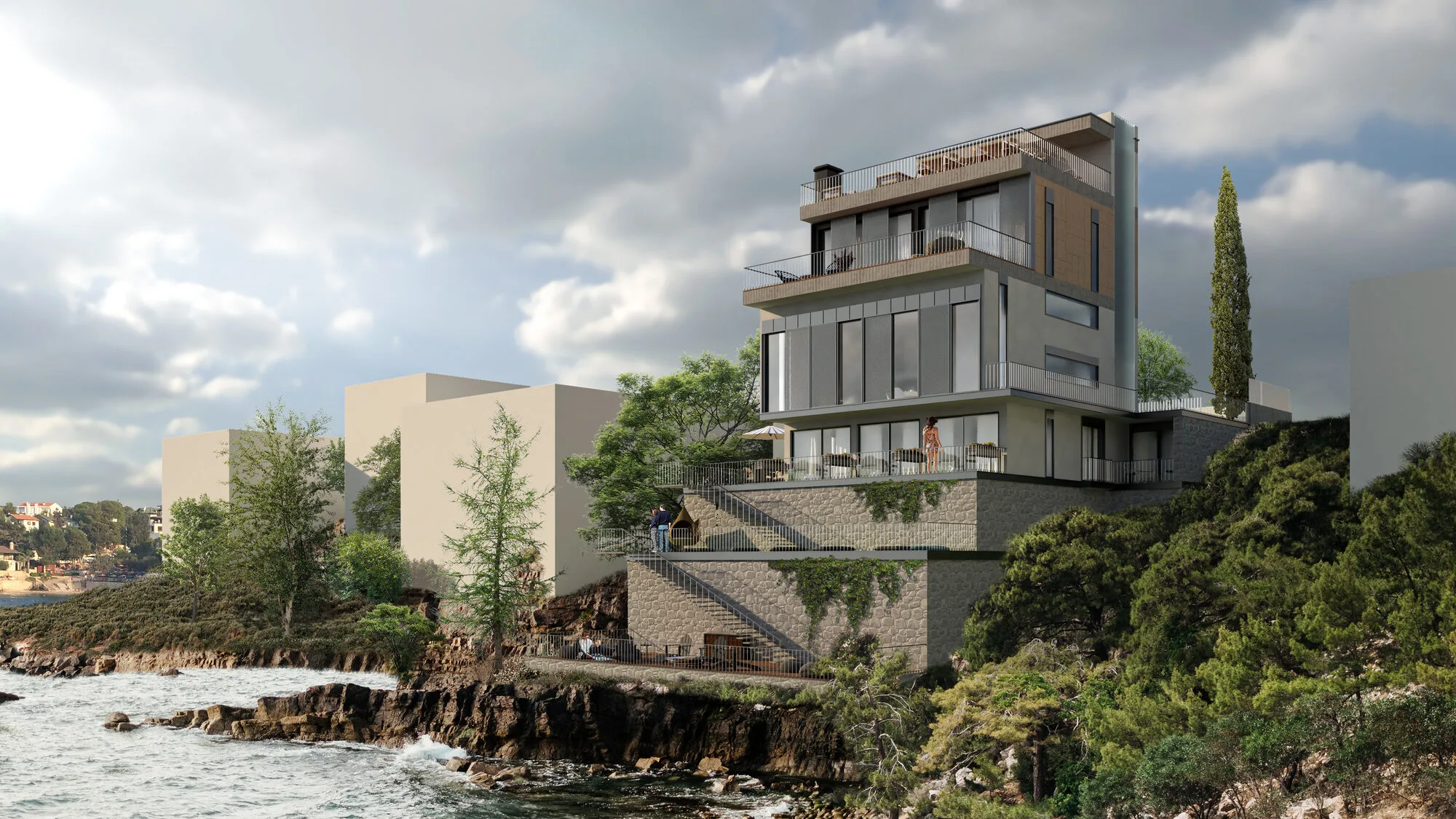
Particularly relevant to the Ege Region, the design incorporates shading elements that mitigate the effects of the sun, crucial for enhancing comfort during the hot summer months. The facade is predominantly clad in light-toned natural stone, providing a harmonious connection to the surrounding environment. In contrast, the level designated for the family’s exclusive use features a rich brown tone, creating a visual distinction that emphasizes privacy while maintaining coherence with the overall design language.
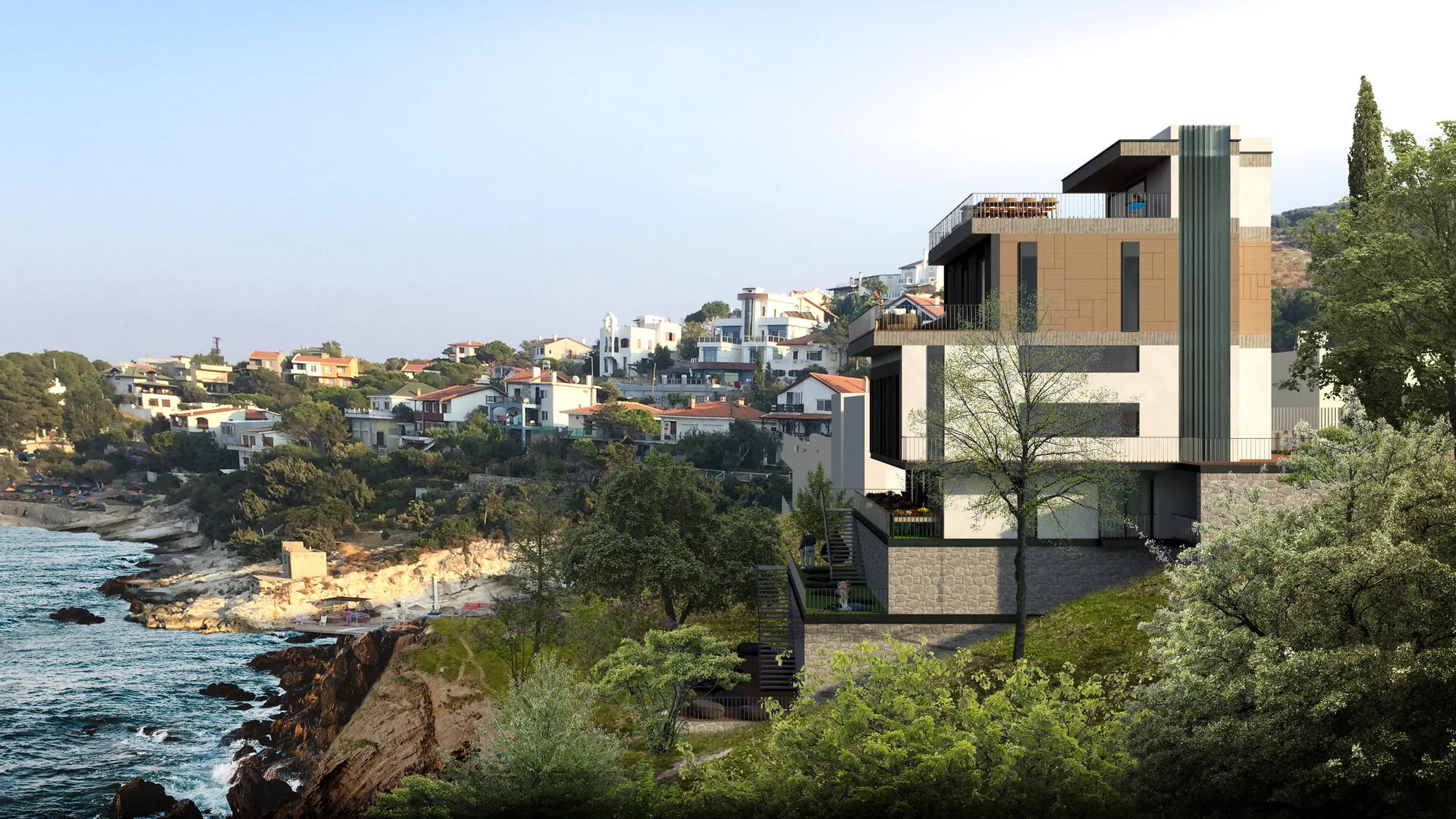
The carefully crafted openings in the facade, dictated by the placement of shading devices, ensure that breathtaking views of the sea are not only preserved but also seamlessly integrated into the living experience of the occupants. This design strategy allows the interior spaces to be bathed in natural light while maintaining a comfortable indoor climate, showcasing a thoughtful balance between architectural intent and environmental responsiveness.
